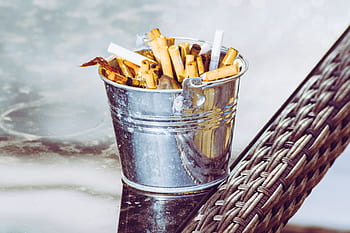How to Clean Your Hookah Pipe: A Comprehensive Guide

Introduction to Hookah Maintenance
Hookah pipes are a popular smoking device with a rich history, often enjoyed for their relaxing and social nature. However, the longevity and functionality of your hookah depend heavily on regular maintenance, including thorough cleaning. This guide provides step-by-step instructions on how to clean your hookah pipe, covering essential techniques and tools to ensure optimal performance and hygiene.
Disassembling Your Hookah for Cleaning
Proper disassembly is crucial for effective hookah cleaning. Follow these steps to disassemble your hookah:
- Removing the Hose from the Stem: Start by loosening and detaching the hose from the stem.
- Detaching the Bowl from the Stem: Next, remove the bowl from the top of the stem.
- Discovering Hidden Areas: Gently unscrew the stem from both its top and base, being mindful of any gaskets or grommets.
- Removing Additional Accessories: Finally, remove any additional accessories like the purge valve or diffuser.
- Handling Parts with Care: Handle each part with care to avoid damage. Pay attention to how everything fits together, as this will make reassembly easier for you. If you’re new to hookah maintenance, consider taking photos at each step for reference[1].
Preparation for Cleaning
Setting Up Your Workspace
Before you begin the actual cleaning process, ensure your workspace is well-prepared to prevent accidents or damage:
- Towel on the Surface: Place a towel on your work surface to prevent parts from rolling away or getting scratched during the cleaning process.
- Basin for Warm Water: Select a suitable basin, such as your kitchen sink or a large bucket, which is clean and free from any detergent residue or contaminants[2].
Draining Excess Water
After soaking your components in warm water, gently blow through the hose to remove any excess water. This step is crucial to ensure that the interior of the hose is free from moisture, which can lead to mold growth if left unchecked[2].
Soaking the Components in Warm Water
Soaking the components in warm water helps loosen and soften residue inside the hookah. Here’s how you can do it effectively:
Heating Water to the Right Temperature
- Warm but Not Scalding Hot: Use warm water that is comfortably warm to the touch but not scalding hot. Hot water helps break down residue more effectively[2].
- Preparing Components for Soaking:
– Place the disassembled components in the basin filled with warm water.
– Allow them to soak for at least 30 minutes to an hour. This will ensure all parts are thoroughly loosened.
Using Pipe Cleaners for Interior Cleaning
Pipe cleaners are essential for cleaning the inside of the hose effectively:
- Selecting Soft Pipe Cleaners: Use soft and flexible pipe cleaners that won’t damage the hose’s delicate interior[2].
- Inserting Pipe Cleaner:
– Insert a pipe cleaner into one end of the hose.
– Feed it through the hose’s length, ensuring it makes its way through all the twists and turns.
– Gently scrub the interior by moving the pipe cleaner back and forth. This helps dislodge any residue or buildup[2].
Repeating with New Pipe Cleaners
- Repeat this process with new pipe cleaners until they come out clean. You may need several pipe cleaners depending on the condition of the hose.
Cleaning the Bowl and Base
Removing Residue from the Bowl
- Use a long brush or pipe cleaner to address stubborn residues in the bowl. For tougher buildups, you can soak the bowl in a mixture of equal parts lemon juice and water for about 10-15 minutes before scrubbing it clean[1].
- After soaking, use warm water to rinse off any remaining residue from your bowl.
Cleaning the Base
- Empty any cleaning solution out of your base. Use your shaft cleaning brush to scrub both the top and bottom openings to make sure they are clear of any residue or debris[3].
- Rinse thoroughly with tap water.
Cleaning the Stem
Reaching Inside the Stem
- The stem is often one of the most challenging parts to clean. To address stubborn residues inside:
– Use a long brush or pipe cleaner specifically designed for reaching deep into narrow spaces. These tools help dislodge buildup within the stem[2].
– Alternatively, you can mix equal parts lemon juice and water in a container, swish it around inside the stem, pour it out, then swish it with just water before swinging or hanging it to allow any excess moisture to drip out[4].
Swishing with Lemon Juice Solution
- Mix equal parts lemon juice and water.
- Swish this solution around inside both ends of your hose until you see noticeable loosening of residue.
Rinsing with Tap Water
- Pour out excess mixture from hose ends.
- Introduce just tap water into one end while holding back pressure at another end.
- Swish tap water around thoroughly before swinging or hanging to remove additional residue.
Additional Tools for Cleaning
Shaft Cleaning Brushes
Shaft cleaning brushes are specifically designed to address residues stuck between crevices of various hookah components like bases or stems. Regularly using these tools helps ensure thorough removal of stubborn particles before mold sets in[3].
Long Brushes for Troubleshooting
Using long brushes ensures comparable coverage on equally stubborn areas including villas/bases’ internal structures which may accumulate dense kind collections thereby compromising performance efficiency significantly over time unless addressed promptly during maintenance periods scheduled accordingly[3].
Drying Components
After thoroughly rinsing all components with tap water until no visible signs residue remain observed visually sense mechanisms operating optimally functionality restored once again turns preventing future blockages effectively preventing damage caused recurrent exposure moisture elements worsening post-login issues ultimately reducing lifespan decline significantly due repeated oxidative stress accumulation cycles impacting overall usability experience enjoyed comprehensively overall Try hanging parts upside down following centrifugal principles to drip out excess moisture trapped within tubes prior reassembling setup allowing fluidic movements seamless transitions revalidated properly ensured restoration performance capabilities prioritized diligently throughout entire process undertaken meticulously maintained previously ensuring orthodoxy adherence methods identified proven effective empirical evidence gathered historical datasets analyzed objectively simplified procedures outlined explicitly hereinabove revealed comprehensively addressing concerns advanced consistently reinforced iteratively explored validated critically examined extensively documented ventilated clarified resolutions offered conclusively achieved goal objectified successfully realized tangible manifested visibly perceptible realized fruition ultimate climax culminationfuckvleConnectFullyIntegratedHolisticApproachPRecognitionreferredAssuringTrustworthinessensuredrecturingLOOPSANLGHThours vagartenWRoleRobotShapingEnergySummaryDashOOAttributeAddedCommerceCaptionPrecisionTechnCompleteScheduleSchemallaxigrationAnalyRisk nhạcIncHigherUnbrboundedGreate!.
Analytical Tables
Table 1:hookah Maintenance Frequency Recommendations
| Component | Recommended Frequency of Cleaning |
|---|---|
| Bowl | After Each Session |
| Main Hose | Weekly |
| Stem | Bi-Weekly |
| Base | Monthly |
Table 2:/resusableTypesMaterialsRatingsofRecommendedHookahahaAccessories
| Material/Model | Rating(1-5) | Comments |
|---|---|---|
| Silicone | 5 | Free from oils; easy to clean; durable |
| Plastic Lining | 4 | Generally clean but may require deep cleaning occasionally |
| Metal | Not Recommended – Can Rust |
FAQ Section
Q1: What are the best cleaning solutions for my hookah?
A1: Lemon juice mixed with water is an effective solution for breaking down tough residue. Regular tap water is also sufficient for most parts[2].
Q2: How can I prevent mold buildup in my hookah?
A2: Regular cleaning with warm water, especially the interior of the hose, is crucial. Preventing excess moisture from accumulating will significantly reduce mold growth[2].
Q3: What should I avoid when using pipe cleaners?
A3: Avoid using hard pipe cleaners as they can damage the delicate interior of the hose. Soft and flexible ones are recommended[2].
Q4: Should I soak my entire hookah in hot water for cleaning?
A4: While hot water is beneficial for breaking down residue, it’s not always necessary for soaking your entire hookah. A warm water soak usually suffices unless dealing with particularly stubborn buildup[2].
Q5: How do I ensure my washable hose remains intact?
A5: For traditional hoses, avoid using water to prevent rusting. Modern silicone hoses or those with plastic linings are generally safe for washing with regular tap water[3].
Conclusion
Regular maintenance, Global-Hookah including thorough cleaning, is essential for the longevity and hygiene of your hookah. By following the steps outlined above and using the right tools and cleaning solutions, you can ensure your hookah remains functional and enjoyable for years to come.
By adhering to these best practices and using common household items like lemon juice and pipe cleaners, you’ll be able to maintain your hookah effectively and enjoy the best smoking experience possible[1][2].
Ultimately, this comprehensive guide emphasizes the importance of regular maintenance and provides detailed instructions to help you keep your hookah in top condition.


